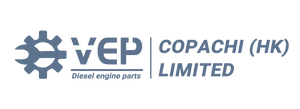Today, more and more cars use turbocharged engines, including many entry-level compact cars and compact SUV. The popularity of small-displacement turbocharged engines has further increased the number of models equipped with turbocharged engines. Should the turbocharger be maintained? Let ’s disassemble a turbocharger and see what happens to a turbocharger that is not maintained daily.
How does a turbocharged engine work?
The turbocharged engine is not complicated, it just adds a turbocharger to the side of the ordinary engine. Its role is to increase the air intake of the engine, thereby increasing engine power and torque. From the original work, a turbocharger is like an air compressor, which uses the exhaust gas flow from the engine as a power source to drive the turbine, which drives the impeller, which then compresses fresh air and sends it into the cylinder.
What are the problems with unmaintained turbochargers?
Let's dismantle a turbocharger today and see what are the problems with a turbocharger that is not maintained often? First, after we got this turbocharger, we found a lot of carbon deposits on the turbine blades and tube walls. It can be seen that this set of turbochargers has not been cleaned for a long time. At the same time, we carefully touched the turbine and found that it had been shaken due to wear and tear, which would affect normal car use.
The Obvious swaying of turbine blades
We first remove the bypass valve actuator by removing the screws. The bypass valve actuator directly controls the bypass valve in the supercharger. The role of the bypass valve is to control the booster pressure of the supercharger to avoid insufficient supercharging at low speeds, the hysteresis of the turbine, and overcharging at high speeds. At high speed and high load, the bypass valve is opened, part of the exhaust gas enters the exhaust pipe through the bypass valve, the turbine speed decreases, and the boost pressure is controlled.
The larger the bypass valve, the larger the exhaust volume, the lower the temperature of the supercharger, and the stronger the horsepower torque. Therefore, many modifications will increase the bypass valve, but the quality is poor and it is easy to cause problems. At present, the bypass valve is divided into a mechanical type and electronic type. The former is mostly used in diesel engines such as trucks, and the latter is used in cars.
Next, we remove the main body of the supercharger. The first thing to remove is the air inlet silencer. Its role is to avoid the whistling sound of the supercharger. Many older turbocharged engines can be obvious when accelerating Hearing this whistle.
Further down, we removed the main body of the blade, and we found that there was already a clear husk inside. The hull was obviously loose because of the turbine blade wear. If it is more serious, it may cause the blade to jam or burst. The cause of the looseness is because when the engine is boosting, the exhaust pressure is higher than the intake pressure, and the turbine blades will be pushed toward the intake direction. When the throttle is released, the intake pressure is higher than the exhaust pressure because the exhaust pressure is released. Therefore, the turbine blades will be pushed back toward the exhaust direction, and the turbine blades will loosen, and the aforementioned situation will occur.
Problems with turbocharger wear?
When the turbine blades become loose, there will also be problems with the internal oil seals, which will cause the engine oil to burn, and the engine oil will be squeezed out from the air intake and exhaust ports, eventually reducing the oil. Next, we continued to disassemble the volute, and after removing the turbine blades, we also found that there was also significant wear in the volute. At the same time, we see obvious carbon deposits on the bottom and bearings.
So how to protect the turbocharger?
The direct cause of the above problems may be that the engine oil is not good, or it may not be regularly inspected. Generally, sports models that focus on performance need to disassemble the turbocharger for maintenance and cleaning. For ordinary vehicles, strictly follow the maintenance instructions on the manual. If it is not maintained in a timely manner, shaft straightness deformation, oil leakage, carbon deposits, wear, and increased clearance will occur until the turbine is damaged. At the same time, blindly increasing the turbine blades without adding reinforced internal parts, such as the shaft is not thickened, the use of counterfeit turbine blades is prone to problems. During maintenance, the oil seal and shaft seal should be cleaned and maintained. If the problem is serious, it needs to be replaced. In the purchase of motor oil, try to follow the instructions as much as possible. Generally, if you can choose the best synthetic oil, you should also choose a big brand.




